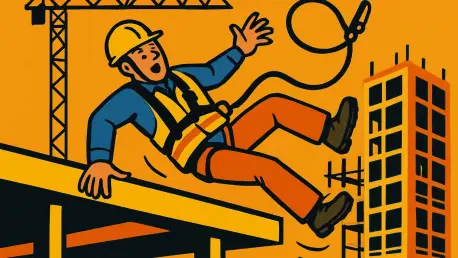In a heartbreaking incident that underscores the critical importance of workplace safety, a construction worker lost his life in a preventable fall through an unprotected skylight at a property in Farnborough, UK. This tragedy, involving Skyladder Construction Limited, has brought to light the dire consequences of neglecting safety protocols when working at height. Falls remain one of the leading causes of workplace fatalities across the UK, accounting for a significant portion of worker deaths each year, according to the Health and Safety Executive (HSE). The incident not only resulted in a profound loss but also led to legal repercussions for the company, serving as a stark reminder of the obligations employers bear to protect their workforce. As details of this case unfold, it becomes evident that adherence to established safety regulations could have averted such a devastating outcome, prompting a broader discussion on the enforcement of safety standards in the construction industry.
Unpacking the Incident and Its Aftermath
Circumstances Leading to the Fatal Fall
On a rainy night in July 2022, Bhakta Rai, accompanying an employee of Skyladder Construction Limited, was at a domestic property in Farnborough to assist with covering a flat roof during the construction of a single-story extension. Tragically, while attempting to secure a plastic tarpaulin over the roof, Rai fell through an unprotected skylight opening, plummeting approximately 2.5 meters onto a concrete floor below. The absence of any safety measures, such as barriers or edge protection, left the skylight dangerously exposed, creating a fatal hazard. Despite efforts to retrieve him by lifting him back through the opening and transporting him to the hospital in a van without emergency medical assistance, Rai succumbed to severe injuries, including a spinal fracture and a fractured skull, just days later. This incident highlights a catastrophic failure in planning and executing safe work practices at height, exposing the grave risks workers face when basic precautions are overlooked.
Immediate Response and Investigation Challenges
Following the fall, the response at the site raised further concerns about the handling of the emergency by those present. Rather than immediately calling for professional medical help, individuals on-site attempted to manage the situation independently, which likely delayed critical care for Rai. Additionally, the HSE investigation encountered obstacles when it was discovered that the tarpaulin had been replaced before inspectors arrived, potentially obscuring crucial evidence about the state of the roof at the time of the incident. The investigation ultimately revealed that Skyladder Construction Limited had not implemented any measures to prevent falls, such as installing guards around the skylight or providing fall mitigation equipment. This lack of foresight and subsequent actions post-incident painted a troubling picture of negligence, underscoring the need for strict adherence to safety protocols and transparent cooperation with regulatory bodies during investigations to ensure accountability and prevent future mishaps.
Legal Consequences and Broader Implications
Court Ruling and Financial Penalties
In a significant legal outcome at Basingstoke Magistrates’ Court on October 31 of this year, Skyladder Construction Limited faced the consequences of its safety lapses. The company pleaded guilty to breaching Regulation 6(3) of the Work at Height Regulations 2005 for failing to take reasonably practicable steps to prevent falls. Additionally, a violation of Section 20 of the Health and Safety at Work etc. Act 1974 was acknowledged due to non-compliance with HSE requests for information during the investigation. As a result, a fine of $33,500 was imposed, alongside $8,472 in costs and a $2,000 victim surcharge. These penalties reflect the gravity of the oversight and serve as a financial reminder of the legal responsibilities employers must uphold. The ruling emphasizes that neglecting safety measures can lead to severe repercussions, both in human and monetary terms, urging companies to prioritize worker protection over cost-cutting or expediency in operations.
Lessons for Workplace Safety Standards
The tragic loss of Bhakta Rai serves as a poignant lesson for the construction industry, where working at height remains a persistent and deadly hazard. The HSE, as Britain’s national regulator for workplace safety, has repeatedly stressed that falls account for a substantial percentage of worker fatalities, yet many incidents are preventable with proper planning and equipment. Guidance provided by the HSE offers practical controls to eliminate or reduce fall risks, which, if followed by Skyladder Construction Limited, could have altered the tragic outcome of that rainy night. This case highlights a broader trend of non-compliance with safety regulations that continues to endanger lives. Employers across the sector are urged to consult and implement HSE recommendations, ensuring that risks are identified and mitigated effectively. Beyond legal fines, the moral imperative to safeguard workers must drive a cultural shift toward prioritizing safety in every aspect of construction work, preventing further heartbreak and loss.









